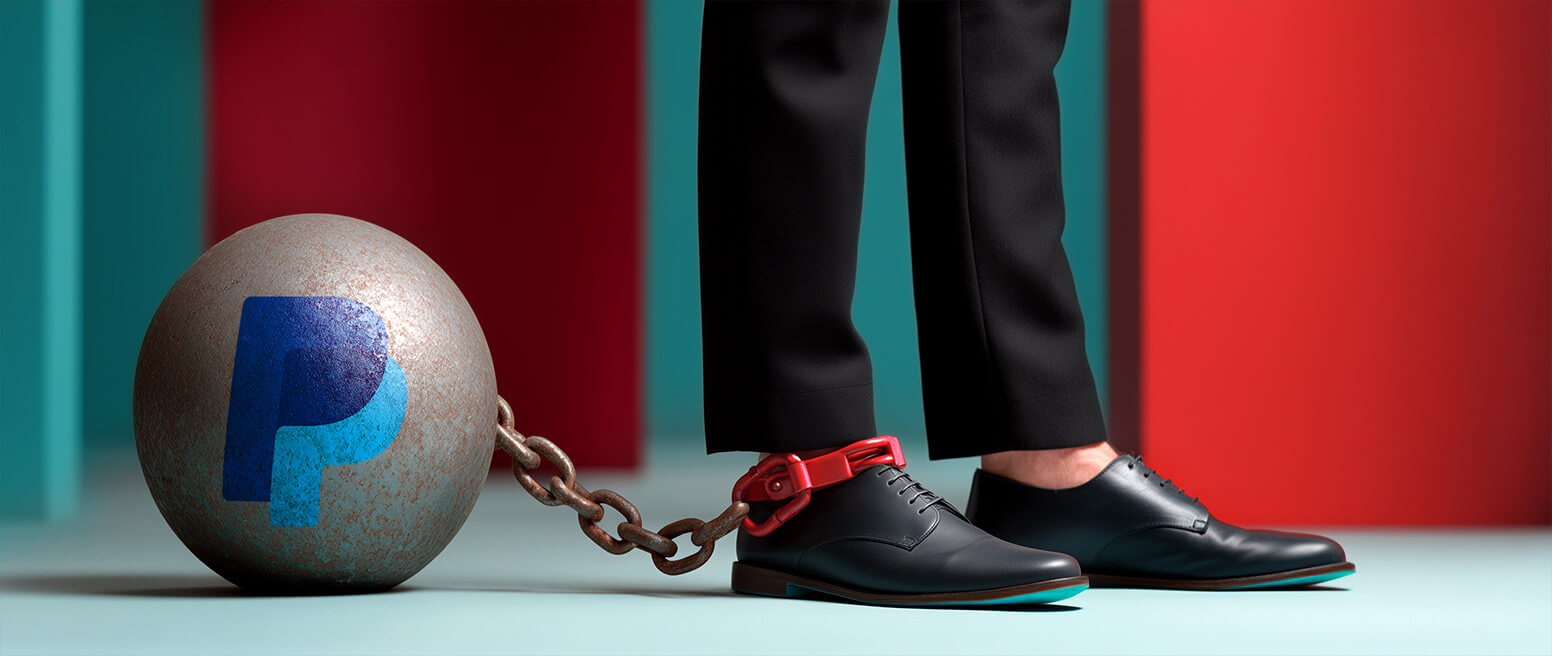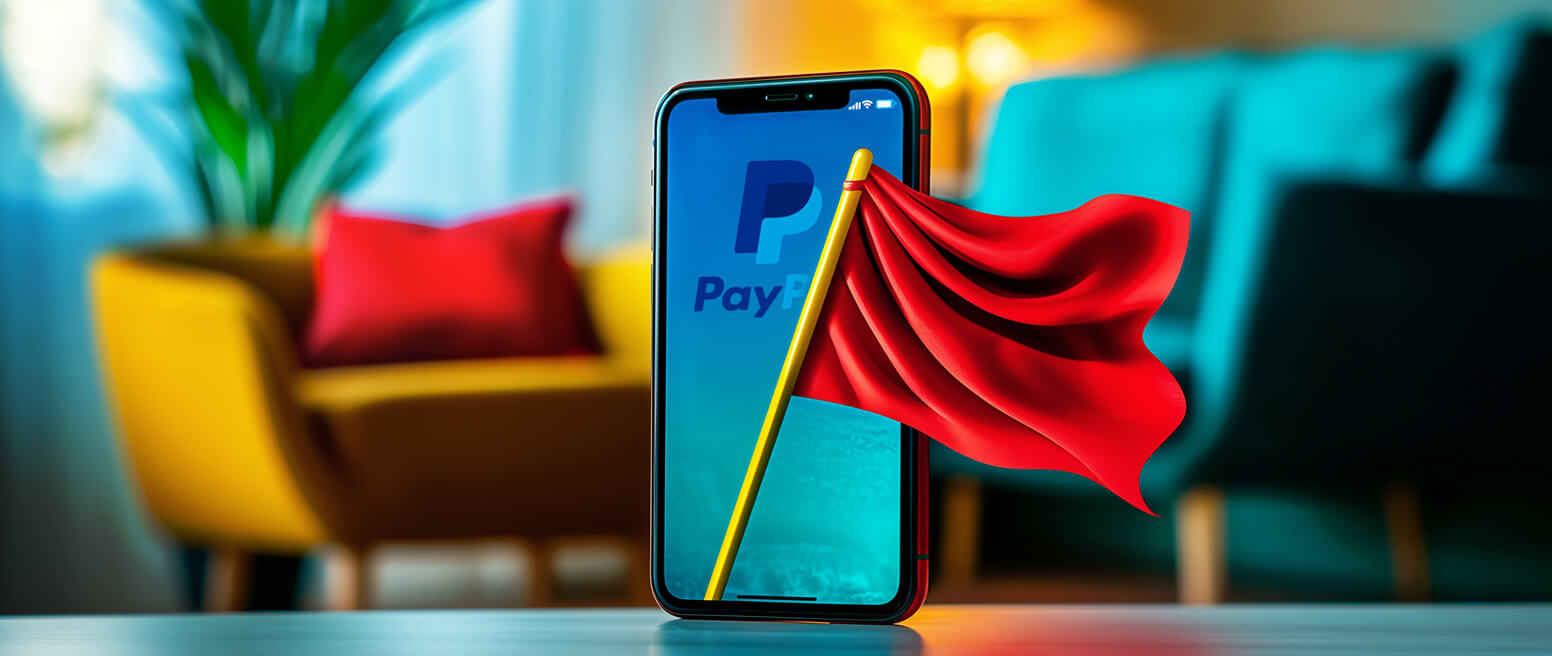What is PayPal Seller Protection? And Just How Much Protection Does It Provide?
If you’re a merchant, any type of “seller protection” can sound pretty inviting. So, your ear probably perked up the second you heard about PayPal Seller Protection.
Naturally, PayPal wants to encourage merchants to use their services. To this end, the company offers this free program that can shield businesses against financial losses from certain types of chargebacks. In this post, we examine what this coverage consists of, and how to get the most out of the program.
Recommended reading
- PayPal Chargeback Time Limits: 2025 Rules & Timelines
- PayPal Account Limitations? Here are 5 Ways to Respond.
- PayPal Refund Scams: How They Work & How to Stop Them
- PayPal Dispute Fees: How PayPal Chargeback Fees Work
- The Top 12 PayPal Scams to Watch for in 2025
- PayPal Purchase Protection: What is it & How Does it Work?
What is PayPal Seller Protection?
- Seller Protection
PayPal Seller Protection is a free program that, in qualifying cases, allows merchants to keep funds that would otherwise be lost to disputed transactions. Seller Protection only applies to select qualifying transactions.
[noun]/sel • ər • prə • tek • SHən/Merchants that accept PayPal payments are automatically covered by the company’s Seller Protection program. This free benefit can protect you from financial consequences due to eligible claims, chargebacks, and reversals.
Let’s say one of your customers disputes a transaction. Depending on the case, you may be able to retain the full amount of the transaction in question, and avoid the related chargeback fees.
There’s no limit on the number of eligible payments you can claim under the program. That said, the key word here is “eligible.” Protection only applies to qualifying claims. Some purchases are automatically ineligible, and there are additional requirements you must meet in order to be covered. We’ll get further into these details below.
As a merchant, you should be able to see that there are definite benefits to the program. In situations that do meet the program’s criteria, PayPal Seller Protection not only safeguards your bottom line; it also helps keep your credit intact.
How Does Seller Protection Work?
Let’s illustrate how this works with an example.
Imagine you have a customer that files a claim or chargeback against a particular transaction. In response, PayPal places a temporary hold on those funds in your account. You’ll still be able to use the account; only the amount of the claim will be locked.
From there, PayPal will examine relevant transaction documentation, like proof of shipment or proof of delivery. As long as the documentation proves you fulfilled your obligations, and you can provide that paperwork in a timely manner, PayPal will insure your funds.
The process is straightforward. But as we mentioned, there are limitations and requirements to consider, including the type of transaction involved. Plus, you need to move fast; failure to provide the requested evidence within the time frame may disqualify the transaction for Seller Protection.
Which Transactions are Covered by PayPal Seller Protection?
The PayPal Seller Protection policy covers transactions that are conducted by US-based sellers. Buyers can be located anywhere around the globe, but the orders must be shipped — with proof of delivery — from within the United States.
Next, protections can kick in under one of two sets of circumstances. First, there’s unauthorized transactions, meaning the customer claims a purchase was made without the specific consent of the cardholder. Second, if the customer claims they made a purchase, but the item ordered was never received.
As of 2024, PayPal has restricted the eligibility of “Item Not Received” claims to cover only those disputes which don't result in an issuer chargebacks. In other words, if the cardholder successfully files a chargeback with the bank, Seller Protection does not apply.
There are additional requirements for PayPal Seller Protection, too. Even with qualifying transactions, you may not be covered unless you follow all these requirements for Seller Protection:
- The primary address for your PayPal account must be in the United States.
- The item must be a physical, tangible good that can be shipped (with certain exceptions).
- You must send the item to the shipping address on the associated Transaction Details page of your PayPal account.
- If an item was delivered in person, the transaction is only eligible for protection if the payment was made in your physical store and paid for in person via a PayPal “goods and services” QR code.
- If the sale involves pre-ordered or made-to-order goods, you must ship within the timeframe you specified in the listing.
- You must respond to PayPal’s requests for documentation and other information in a timely manner.
- PayPal will require proof of delivery and/or proof of shipment.
Are Any Intangible Goods Covered by PayPal Seller Protection?
Yes, some intangible goods are covered. However, these transactions will have specialized requirements imposed on them.
For intangible goods and services transactions to be eligible for PayPal Seller Protection, all of the following must apply:
- If you’ve integrated any PayPal checkout product to accept payments directly through your website, you must be using the current version of that product.
- If you’re integrated with PayPal via a third party, or have native app integration, you must ensure you are passing session information to PayPal at checkout.
- PayPal has specified that the transaction in question is “eligible” in the Transaction Details page, or has provided written notice of eligibility to you.
- You delivered the item, and provided proof of shipment or delivery for Intangible Goods.*
*Proof of shipment or delivery for intangible goods can include a record showing the date the item was sent to the recipient’s email or IP address, or a record showing that the item was accessed by the recipient.
Keep in mind that additional requirements may be imposed by PayPal, depending on your business model. You’ll be informed of these additional requirements by PayPal as needed.

What Constitutes “Proof of Delivery” & “Proof of Shipment”?
Before they determine if a sale is eligible for Seller Protection, PayPal will want to see evidence that you did your part. Of course, even if you can provide the correct documentation, eligibility for seller protection is at PayPal’s sole discretion.
With that in mind, there are two types of documents you need to keep on file for potential evidence:
What Items Are Not Eligible for PayPal Seller Protection?
Seller protection covers a wide variety of items, including tangible goods (clothing, electronics, physical media, etc.), event tickets, travel bookings, and more. However, PayPal also spells out many of the items that are not eligible for coverage. This list includes:
- Items that are picked up or delivered in person, or through First Class Mail International
- Prohibited items such as drug paraphernalia, ammunition/firearms, or counterfeit goods
- Items which differ significantly from their description
- Businesses or real estate
- Motor vehicles (Cars, motorcycles, aircraft, boats, etc.)
- Items equivalent to cash (coupons, prepaid or gift cards, etc.)
- Intangible goods (except with additional requirements, as noted above)
- Donations to charitable organizations from PayPal Give Funds or PayPal checkout
Coverage also does not apply under certain transaction circumstances:
- The payment was not made through PayPal
- The transaction was made through PayPal Direct, Virtual Terminal, PayPal Business, or PayPal Here
- The transaction involves multiple payments received for one item (potential fraud)
- The claim was filed directly through a third-party platform such as an eBay account
How to Get the Most from PayPal’s Seller Protection
PayPal Seller Protection is simple to use. But, coverage is not automatic. You need to make sure that your PayPal transactions are conducted with potential future disputes in mind. PayPal recommends that you always:
- Double-check shipping: Make sure you are shipping the item to the address in the transaction details, and keep the proof of shipment in your records.
- Keep all proof of the transactions on file: It’s important to keep a running file of all proof-of-delivery documents or evidence of use of the service.
- Respond to all requests promptly: If PayPal requests documentation, you should respond promptly, typically within 10 business days.
- Make sure transactions are marked eligible: The payment must be marked “eligible” or “partially eligible” on the Transactions Details page.
Is PayPal Seller Protection Enough?
While PayPal Seller Protection may insulate you against some losses, there are many situations where it won’t help at all. If the customer files a chargeback with the bank concerning a non-delivered item, for example, Seller Protection will not be available.
More importantly, Seller Protection is a short term solution that doesn't address the underlying issues that caused a chargeback in the first place. The only way to reduce chargebacks over the long haul is a proactive prevention strategy that addresses disputes at their true source.
If you’re feeling overwhelmed by chargebacks, maybe it’s time to get back to the business of running your company. Chargebacks911® can take chargeback management completely off your plate and up your ROI. Contact us today to learn more.
FAQs
Does PayPal have protection for sellers?
Yes. Under PayPal’s Seller Protection program, the merchant can potentially be refunded the entire purchase amount for qualified claims and chargebacks.
How can I protect myself as a seller on PayPal?
Steps for protecting yourself on PayPal are the same as selling from any other site: use online tools such as the Address Verification System (AVS), always collect the buyer’s CVV, and require strong passwords. In addition, you must be sure to follow the criteria that PayPal has set for its Seller Protection program, including timely responses to requests for proof of delivery or shipment.
Will PayPal protect me if I get scammed?
In qualified cases, yes. Buyers are safeguarded through the Buyer Protection program; sellers are covered by both the PayPal Seller Protection program and PayPal Chargeback Protection.
What is not eligible for PayPal Seller Protection?
Certain merchandise or services are not covered by PayPal Seller Protection, including Items picked up or delivered in person, most digital content, items sold outside the US, and payments not made through PayPal.
Is PayPal Seller Protection Free?
Yes. Opening an account automatically gives you access to the program. There is no PayPal Seller Protection fee.
Is PayPal Seller Protection changing in 2024?
Yes. Starting in 2024, PayPal withdrew seller protection for “Item Not Received” chargebacks where the customer had already filed a chargeback with their bank.














